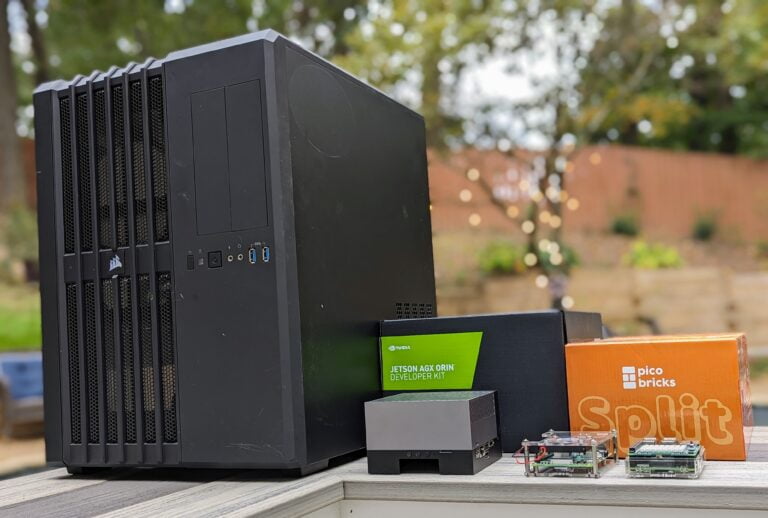October 12, 2024, saw the final race in the IMSA WeatherTech Challenge for the season. As is usual, championships were won and lost during the 10-hour event held annually at Road Atlanta, which I have attended more years than not in the 20 years I’ve lived here. If you’re in the area in October and enjoy motorsports, I strongly encourage you to attend as it’s probably one of the most spectator-friendly tracks and events on the calendar. Or at least any race I’ve attended since my college days (that’s another story for another time – feel free to ask me over a beer sometime).
Last year I was walking through the paddocks at the 2023 running of Petit, and spotted what looked like more than one data acquisition system bolted to the right floorpan of one of the GTD cars. When I asked about it, I was told they were collecting data off well over 300 high frequency sensors, and they had a pair of cars in the race. The back-of-napkin estimate was ~1.5TB of telemetry would be generated by each car over the race weekend. And they were going to wait until the following week to analyze it since they had neither the time nor manpower to do it at the event.
I’ve since talked to club racers, race engineers at multiple levels, and driving coaches. I’ve attended I don’t know how many data analysis webinars and followed numerous data analysis newsletters. I’ve read several books on the topic and completed a half dozen race engineering, data analysis, and vehicle dynamics courses online. The one thing I keep reading and hearing is there is simply too much data for drivers, engineers, and coaches to leverage completely, leaving a lot of opportunity for improvement and insights on the track.
What about the factory teams; surely they are throwing money and manpower at the problem? Based on recent hiring trends in the highest levels of racing, that would seem to be a safe assumption. But what about the privateers and pro/am teams out here who don’t have infinite budgets, manpower, or datacenters at their disposal? Yeah, we had the same thought.
And the concept for The Racing AI for Crew Enablement (RAICE) was born.
Enablement has many meanings, but the ones that resonate most within motorsports are:
- To make possible, practical, or easy
- To provide with the means or opportunity
By leveraging best-of-breed AI solutions, RAICE can help drivers, engineers, and coaches make the most of the data they are already collecting through tests, practice, qualifying and race day. This makes it possible, practical and easier to analyze data between sessions – when it really counts. It also provides the insights (means) and time (opportunity) needed to help you achieve your goals while at the track.
RAICE can tackle challenges like scanning through hundreds of data channels to find the ones needed for the requested data analysis. RAICE can automatically generate virtual sensor channels on the fly to fill in the gaps where possible, and it’s robust enough to provide meaningful results even with missing, noisy, or spotty data. RAICE is also able to analyze groups of data channels across varying distance- and time-spans to capture the cause-effect interaction between those channels. And it can process entire sessions to identify common points of interest across all laps, not just the fastest ones.
All the nerding out of the way, what this means for your team is less time staring at data is more time spent improving drivers, finding performance gains on the vehicle, and catching expensive failures before they grenade your weekend.
Wrapup
If you like what you’ve read so far, we’d love to hear from you! We’re very excited about bringing the power of AI-driven data analysis to privateers, pro/am teams and driving schools by way of RAICE, and enable your crew to do more with what they already have.
And of course, move fast and win things. 🙂







